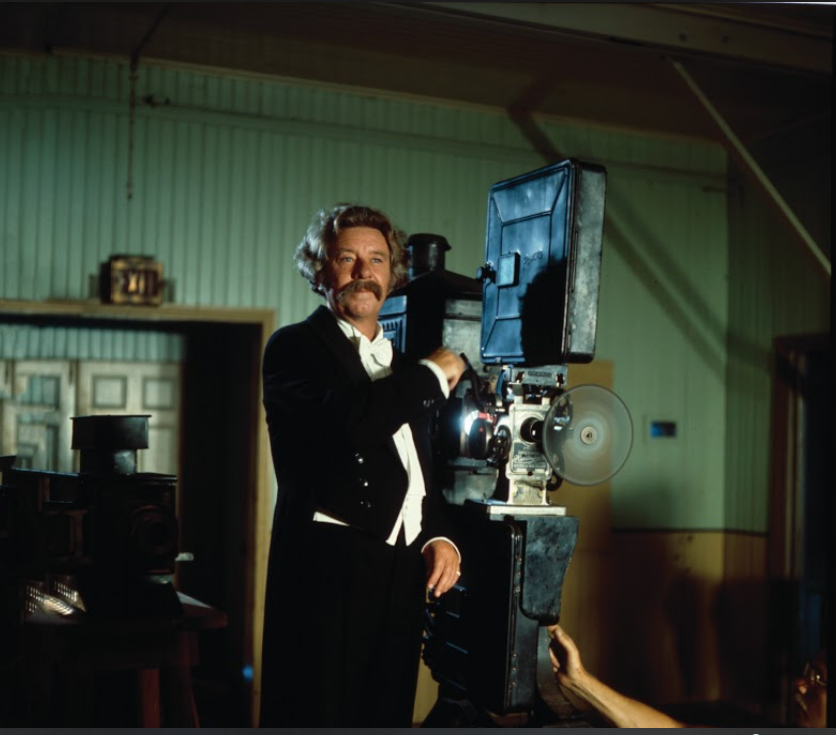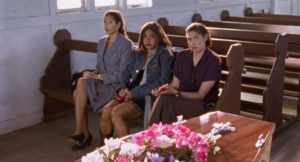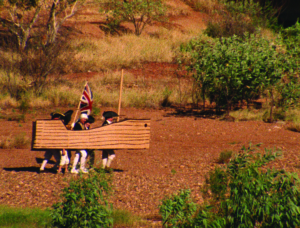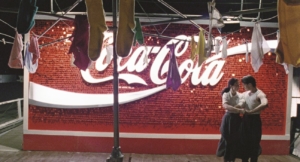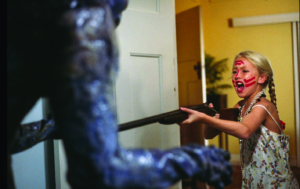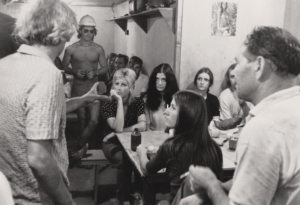The Picture Show Man (John Power, 1977) is a leisurely, episodic and picaresque portrait of the long-forgotten days of the travelling film exhibitors who traversed the backblocks of Australia in the 1920s and early 1930s. It follows the activities of one such struggling operation and its adventures and encounters with tight-knit communities, the challenges of fly-by-night film exhibition, female companionship, and the competitiveness of a brash and opportunistic American rival.
The film focuses on the interactions between Maurice ‘Pop’ Pym (John Meillon), his son Larry (Harold Hopkins) and their newly hired pianist Freddie (John Ewart), as well as the various colourful characters they encounter on their journeys including a pair of eccentric but felonious illusionists, Fitzwilliam (Patrick Cargill) and Madame Cavalli (Jelena Žigon); a sexually frustrated widow, Mrs Duncan (Jeanie Drynan); a ‘squatter’s daughter’, Lucy (Sally Conabere); and a dance instructor, Miss Lockhart (Judy Morris), enamoured with the famed Isadora Duncan. The Picture Show Man is one of only a small number of Australian films that deal directly with aspects of local and national film history, and which draw extensively on the archival research undertaken by one of its key creative personnel, writer/producer Joan Long. The film’s reputation may have suffered in comparison to the more audacious, ambitious, technically brilliant and truly seminal Newsfront (Philip Noyce), a similarly cinema history–focused, but more filmically dynamic, opus released to much fanfare the following year. The Picture Show Man does, however, deserve to be re-evaluated in relation to the writing and rewriting of Australia’s film history in the 1970s and 1980s, the much-derided ‘AFC [Australian Film Commission] genre’ or period film, the increasing importance and invaluable contribution of key female production personnel to the Australian feature-film industry, and the model and example it offers for local films attempting to attract international recognition and distribution, among various other factors.
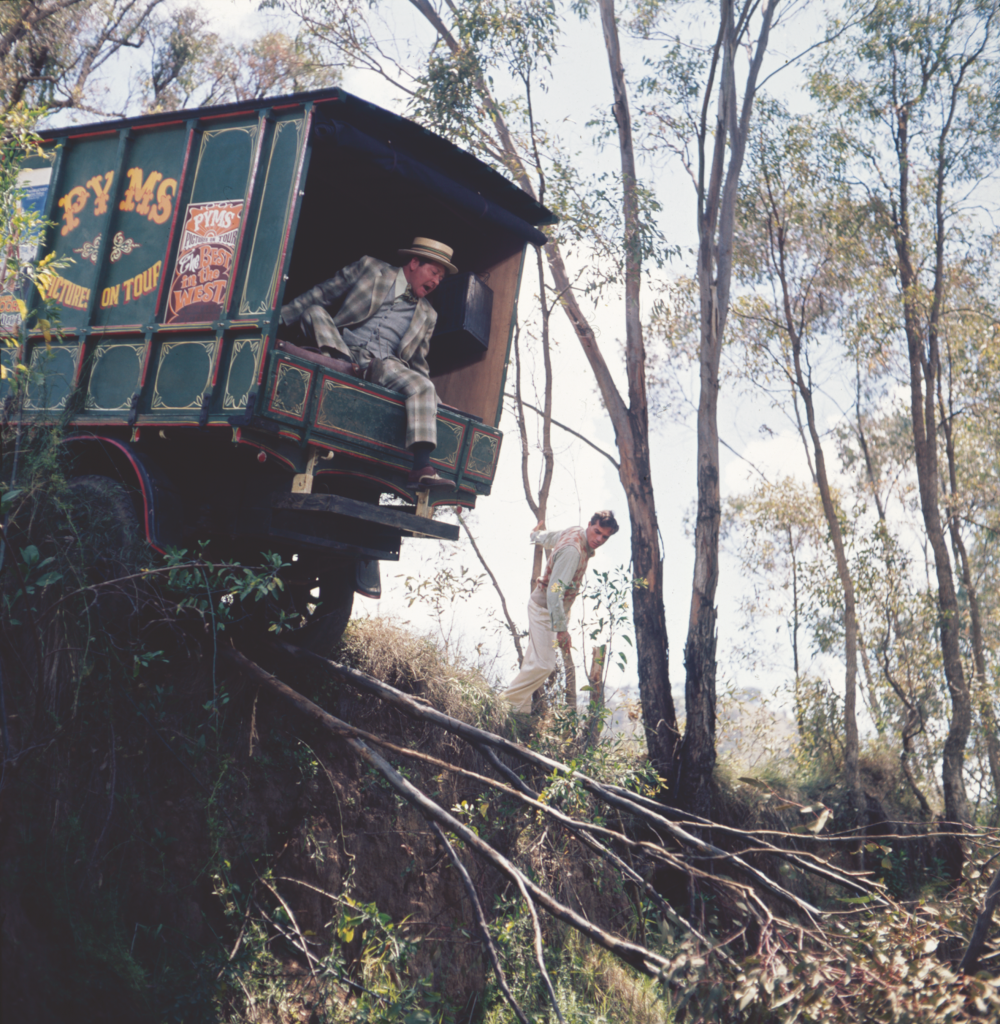
Production and release
The film’s cast includes a number of important Australian actors of the era, including Drynan, Ewart, Hopkins, Meillon, Morris and Tony Barry; as well as several international performers somewhat-fancifully introduced to attract unlikely and only ever lukewarm overseas interest, like Cargill, known for his role in Father Dear Father, and Žigon, a Yugoslav actress. It also marks the return of one of Australia’s most successful international stars, Rod Taylor, a key motivating factor for the film’s comparatively robust, if patchy, international screening schedule and release. Much of the writing and publicity around the film centred on Taylor’s homecoming,[1]See, for example, Susie Eisenhuth, ‘Reunion of the Three Wild Men’, Australian Women’s Weekly, 17 November 1976; Andy Fowler, ‘Superstar Rod Teams Up with His Old Mate John’, The Daily Mirror, 8 September 1976; and Don Groves, ‘The Many Faces of Rough Diamond Rod’, TV Times, 18 December 1976. an emphasis that seemed somewhat out of kilter with his supporting role as Palmer, the ironic decision to have him play an American partly due to his inability to re-confect an Australian accent, and the lightweight and one-or, at best, two-dimensional nature of his characterisation. Taylor’s role also brought to the surface the perennial conflict between truly local film production, distribution and exhibition and competing models imported from the United States and elsewhere.
Unlike Newsfront, which potently and melancholically documents the demise of Australian production interests in the 1940s and 1950s through the fates of rival newsreel companies, The Picture Show Man provides a markedly less nuanced and more explicitly allegorical portrait of jerry-built but ingenious local operations struggling to compete with more streamlined and increasingly mechanised forms of cinema imported from overseas. Palmer is the first to introduce sound, electrification, automotive transport and other innovations, though, tellingly, we are never actually privy to any of the screenings he stages. Still, in keeping with the overall breezy tone of the film, he emerges as an affable phantom rather than a truly substantial figure or threat. In contrast, the patently nostalgic and blustery ‘Pop’ Pym – the ‘picture show man’ of the title – helps frame an earlier historical transition from vaudeville and precinema to the movies (the other ‘transition’ dealt with explicitly by the film is the arrival of sound). Taylor’s Palmer highlights the shallow showmanship and homogenised experience that started to take root and then dominate in the 1920s, while Meillon’s Pym is a symbol of old-fashioned integrity and continuity, defined and vaunted qualities throughout Australian film history.

The Picture Show Man was shot in a range of locations on the New England plains around Tamworth and in the river country near Grafton in northern New South Wales. It was filmed over a seven-week period from 17 October to 4 December 1976.[2]David Stratton, The Last New Wave: The Australian Film Revival, Angus & Robertson, Sydney, 1980, p. 238. The production brought together a range of significant figures from the Australian film and television industries, including a number of established actors and technicians as well as its highly regarded director, Power. Although this was Power’s first feature, he had considerable experience as a director, including on the AFI Award–winning TV movie Billy and Percy in 1974.[3]Most of Power’s subsequent work was in TV and included episodes of series such as The Dismissal, Return to Eden and The Dirtwater Dynasty, as well as a number of TV movies. His only subsequent theatrical feature, Father (1990), is a powerful account of the traumatic legacy of Nazi war crimes, starring Max von Sydow. He had also already shown an affinity for historical subjects when making this and the slightly earlier Escape from Singapore (1974), and was chosen by Long because she ‘thought he had also shown in some of his work a flair for the kind of gentle comedy at which [the film] was aiming’.[4]Joan Long, ‘Suffering in Silence’, Nation Review, 23 June 1977. Although Long was undoubtedly the key figure from the moment of the project’s inception, Power still had a significant impact on some pre-production decisions. For example, it was he who suggested Taylor for the role of Palmer, an idea that shifted the dynamic, orientation and fate of the film.[5]See Stratton, op. cit., p. 238.
The project was written as a showcase for Meillon in the central role, but also provided the opportunity for the reunion of Meillon, Taylor and Ewart, fast friends who had last worked together in Australian radio in the early to mid 1950s. A number of production reports on the film mention the rekindled camaraderie between these three drinking buddies as well as some of the concessions made by Taylor in returning to Australia and taking on a supporting role to Meillon, commonly a character or ensemble player who was one of Australia’s most highly regarded actors of the era.[6]Meillon appeared in a number of often eye-catching smaller roles in Australian, British and US productions from the late 1950s onwards. These included significant films such as On the Beach (Stanley Kramer, 1959), The Sundowners (Fred Zinnemann, 1960), Billy Budd (Peter Ustinov, 1962), They’re a Weird Mob (Michael Powell, 1966), Walkabout (Nicolas Roeg, 1971) and Wake in Fright (Ted Kotcheff, 1971). He was also widely known to Australian audiences for his leading role in the TV comedy series My Name’s McGooley, What’s Yours?. British director Powell was particularly complimentary about Meillon’s talents, claiming he ‘was a genius, but far out’; see Michael Powell, Million-dollar Movie, Mandarin, London, 1993, p. 476. The production team was rounded out by such key personnel as cinematographer Geoff Burton, who’d worked previously with Power and had just shot two seminal films of the ‘revival’: Sunday Too Far Away (Ken Hannam, 1975) and Storm Boy (Henri Safran, 1976). The costumes were designed by Judith Dorsman, who’d previously worked on Picnic at Hanging Rock (Peter Weir, 1975) and Caddie (Donald Crombie, 1976), and Sue Milliken filled the role of production manager; the latter would go on to produce movies such as The Odd Angry Shot (Tom Jeffrey, 1979) and Black Robe (Bruce Beresford, 1991).
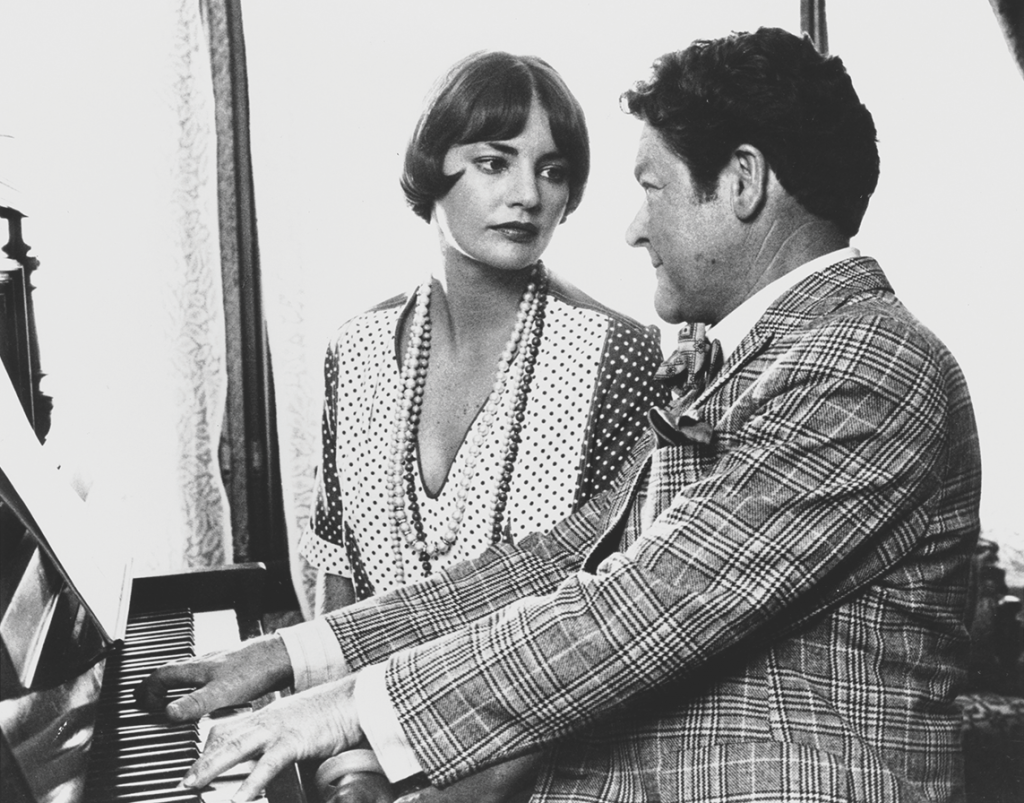
Critical reception
Although the film was not a box-office success, and was inaccurately claimed by some commentators to be a significant failure,[7]See, for example, the comments by Tim Burstall – later refuted by Long – in ‘Not a Disaster’, The Bulletin, 8 October 1977. it came close to returning the cost of its production budget (just over A$600,000) on its Australian release – a result most local features can’t come close to boasting – and was one of the few antipodean films of the period to receive relatively significant exposure at international festivals and on its arthouse release. The film was distributed by Roadshow and premiered in Australian cinemas in early May 1977, enjoying the most success in New South Wales (screening at Sydney’s Village Cinema City) and Queensland. Its release in Melbourne at Village’s East End One was less fruitful than anticipated, and mirrored its relatively lukewarm or ‘mixed’ critical reception around the country.[8]For an overview of this response, see Andrew Pike & Ross Cooper, Australian Film, 1900–1977, rev. edn, Oxford University Press, Melbourne, 1998 [1980], p. 312. For example, in Cinema Papers, Basil Gilbert made some positive claims for Burton’s ‘beautifully impressionistic camera style’, Meillon’s performance and Power’s ‘polished’ direction, but called the film overall ‘a collection of down-to-earth reminiscences which present a historical vignette, rather than a compelling narrative’.[9]Basil Gilbert, ‘The Picture Show Man’, Cinema Papers, issue 13, July 1977, pp. 80, 79. More troublingly, Gilbert opens his review with some outwardly and bizarrely misogynistic claims about the possible reasons underlining the film’s failure: ‘If there is any truth in the assertion that male writers cannot do justice to the female psyche in their novels and plays, and women writers castrate their literary creations, then this may account for the success of Joan Long’s production of Caddie and the relative failure of her recent The Picture Show Man’ (p. 79). The less said about the arguments and assumptions contained in this part of Gilbert’s review, the better. Meanwhile, in The Bulletin, Sandra Hall criticised the flimsiness and folksiness of the film’s characterisations as well as its desperate eagerness ‘to be picturesque’.[10]Sandra Hall, ‘A Folksy Experiment That Misses’, The Bulletin, 14 May 1977, p. 63. Taylor’s biographer, Stephen Vagg, went as far as to claim that the ‘[r]eviews from local critics’ at the time of the film’s initial release ‘were remarkably snide, both about the film and [particularly] Rod’s performance’.[11]Stephen Vagg, Rod Taylor: An Aussie in Hollywood, BearManor Media, Duncan, OK, 2010, p. 195. The first international review of the film in Variety was generally much more positive in its tone and evaluation, praising the movie for its ‘old-fashioned endearing quality’; see Mike Harris (Miha), ‘The Picture Show Man’, Variety, 13 April 1977. Despite this overall critical reception, the film did win in four categories at the 1977 Australian Film Institute Awards: Best Supporting Actor (Ewart), Best Production Design (David Copping), Best Costume Design (Dorsman) and Best Original Music Score (Peter Best). The spread of these awards suggests the piecemeal nature of the film’s signature achievements.
The film has largely receded from critical attention since its Australian release in 1977 … The Picture Show Man is routinely seen as an affectionate, episodic, leisurely and relatively ineffectual period piece dealing with a marginalised aspect and practice of cultural history.
Long also travelled to Cannes to promote and sell the film in the weeks immediately following its Australian release and, perhaps surprisingly, received significant praise from several overseas commentators, including western historian William K Everson. Everson was instrumental in getting the film included on the US National Board of Review’s top ten English-language movies of 1977, where it sat alongside the now-iconic likes of Star Wars (George Lucas), Annie Hall (Woody Allen), Julia (Fred Zinnemann) and Harlan County, USA (Barbara Kopple, 1976). Everson’s overwhelmingly positive response highlights the old-timey and leisurely aspects of the film, qualities that align it with other nostalgic, comedic and ‘revisionist’ westerns of the period such as Hearts of the West (Howard Zieff, 1975) and Nickelodeon (Peter Bogdanovich, 1976), a film set in the early twentieth century that shares The Picture Show Man’s affection for the nascent days of the movies. But he also demonstrated a surprising knowledge of Long’s career up until that point as well as the film’s place within various local contexts, seeing it as
a logical outcome of her earlier (and exemplary) documentaries on the history of the Australian film. In it one finds the same accuracy and loving attention to detail, but it is not heavily underlined, and the film is first and foremost a rollicking, charming, often very funny and sometimes extremely moving account of the old Australian showmen who brought movies to the bush and outback country in the silent days. It is everything that Nickelodeon should have been and wasn’t.[12]William K Everson, ‘The Picture Show Man’, Films in Review, vol. 28, no. 9, November 1977, p. 565. The film received significant exposure at the Telluride Film Festival in September 1977.
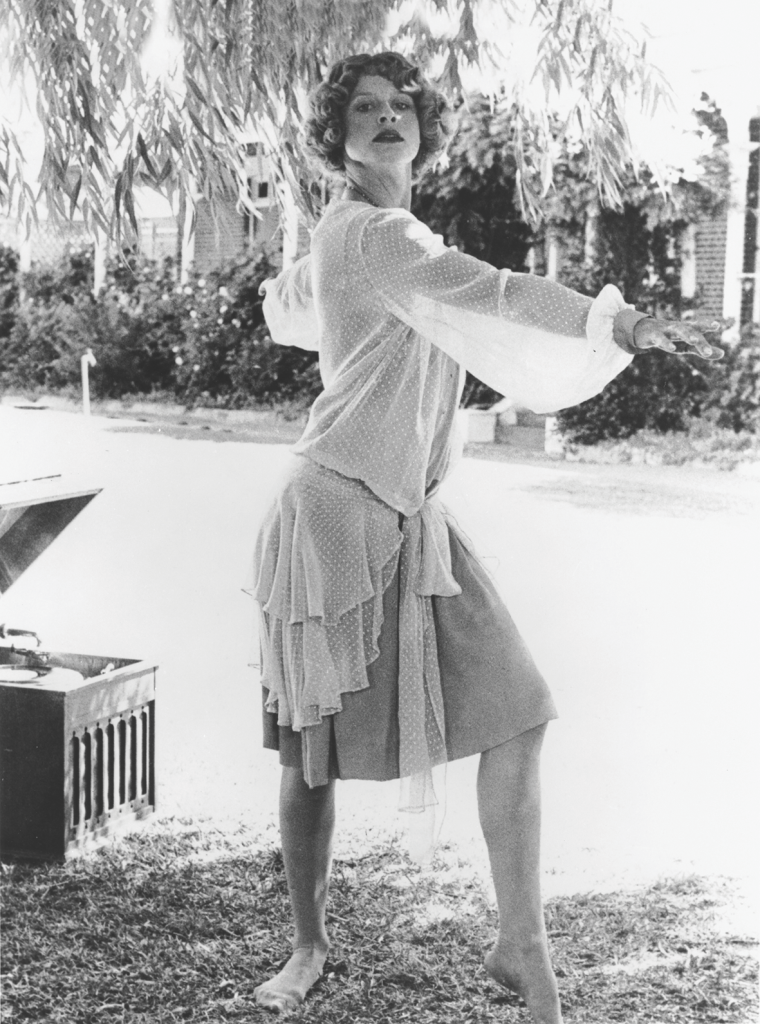
Despite the implications of these glowing sentiments, The Picture Show Man received a decidedly staggered and uneven international release over the next four to five years. This can be traced across occasional reviews of the film that appeared in The New York Times in late 1980, in Britain’s Monthly Film Bulletin in early 1982 and as a result of its screening on BBC TV in 1979.[13]See Janet Maslin, ‘Screen: Thalia Rescues Picture Show Man’, The New York Times, 26 December 1980; John Pym, ‘The Picture Show Man’, Monthly Film Bulletin, vol. 49, no. 576, January 1982, p. 110; and Michael Hohensee, ‘Picture Show Man for BBC’, TV Times, 7 January 1979. It was also sold to a range of other territories including Germany, Italy, Belgium, Denmark, Norway, New Zealand, Iceland and seven Latin American countries.[14]See Peter Wilson, ‘Picture Show Man Heads for the U.S.’, The Sun, 4 January 1978. Although Taylor was seen as an important addition to the cast and a fillip to the film’s international box-office prospects, his stardom was well and truly waning by the time of its production and release. Taylor himself was more critical of Long’s heroic efforts in selling and promoting the film overseas and thought that the movie would have been better served by employing the honed skills of someone more experienced in international film marketing and sales.[15]See the short interview with Taylor, ‘Return to Oz’, included as an extra on Umbrella Entertainment’s 2005 DVD release of the film. Taylor certainly considered the film a more commercial and internationally competitive work than even a cursory look at the congenial finished product would suggest.
Power’s film survives as a remnant of a very different screen industry, one that has been transformed almost as radically in the last forty years as it was between the time of The Picture Show Man’s production and its setting in the 1920s.
The film has largely receded from critical attention since its Australian release in 1977. Although Caddie is still commonly singled out as one of the key films of the revival, The Picture Show Man is routinely seen as an affectionate, episodic, leisurely and relatively ineffectual period piece dealing with a marginalised aspect and practice of cultural history. This rarely revived film[16]In this regard, The Picture Show Man remains a somewhat-marginal choice on the list of fifty colour films designated for restoration under the Kodak/Atlab banner. Decisive factors in its inclusion were undoubtedly its subject matter along with the important contributions of its historically significant cast and crew. remains virtually unmentioned in key works such as Tom O’Regan’s Australian National Cinema[17]Tom O’Regan, Australian National Cinema, Routledge, London & New York, 1996. In fact, O’Regan doesn’t mention the film at all. and volumes that attempt to survey post-1960s Australian cinema, like Jonathan Rayner’s Contemporary Australian Cinema: An Introduction.[18]Jonathan Rayner, Contemporary Australian Cinema: An Introduction, Manchester University Press, Manchester & New York, 2000. Various writers, including Graeme Turner, Geoff Mayer, Neil Rattigan and Brian McFarlane express a keen aversion to the film’s slow pace and anecdotal screenplay, as well as its comfortable place within the then-‘dominant’ and often-maligned genre of the period drama.[19]See Graeme Turner, ‘Art Directing History: The Period Film’, in Albert Moran & Tom O’Regan (eds), The Australian Screen, Penguin Books, Melbourne, 1989, pp. 99–117; Geoff Mayer, ‘Comedy’, in Scott Murray (ed.), The New Australian Cinema, Thomas Nelson, West Melbourne, 1980, pp. 45–60; Neil Rattigan, Images of Australia: 100 Films of the New Australian Cinema, Southern Methodist University Press, Dallas, 1991; and Brian McFarlane, Australian Cinema, 1970–1985, Secker & Warburg, London, 1987. One might have imagined that the film’s focus on Australian cinema history would have garnered more attention and sympathy, especially as this is an uncommon subject for a local feature film that would seem purpose-built for Australian film-studies courses. But the decision to focus on the arcane and marginally allegorical practices of the travelling motion-picture exhibitors rather than the more heroic and easily identifiable struggles of individual filmmakers against the broader industry – which characterises self-reflexive art movies such as the remarkable Yackety Yack (Dave Jones, 1974) and the more conventional Newsfront, Hunt Angels (Alec Morgan, 2006) and Parer’s War (Alister Grierson, 2014) – helps relegate, if unfairly, The Picture Show Man to the realm of bucolic nostalgia as well as the somewhat-nondescript mainstream of the overly art-directed ‘AFC genre’.[20]This mythic, almost heroic approach to the struggle of the individual within the parched terrain of Australian cinema is characteristic of a range of books and documentaries including Stratton’s The Last New Wave and the TV documentary series The Celluloid Heroes, commissioned to celebrate the first 100 years of cinema in Australia.
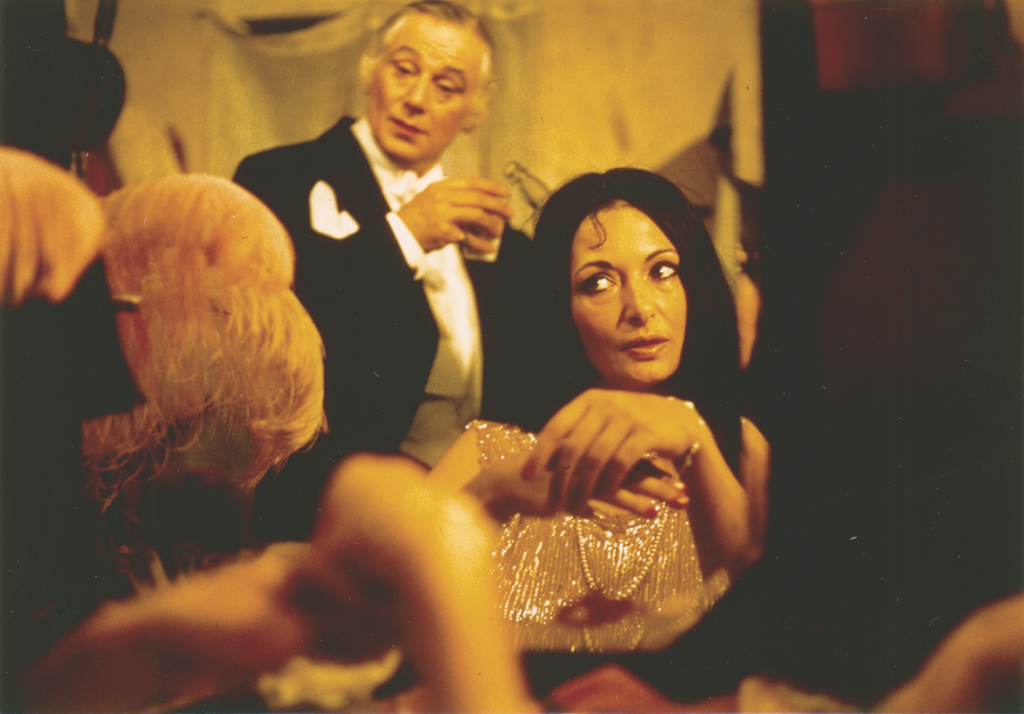
Joan Long and the ‘arrival’ of women’s filmmaking
The Picture Show Man is probably now most notable for the significant involvement of one of the key Australian female screenwriters of the 1970s and 1980s, Joan Long. It is also one of the few films to be produced by a woman in the early stages of the Australian film revival.[21]Other feature films of this era produced by women include The Removalists (Tom Jeffrey, 1975), produced by Margaret Fink; and Break of Day (Ken Hannam, 1976) and Summerfield (Hannam, 1977), both produced by Patricia Lovell. Lovell also acted as executive producer on Picnic at Hanging Rock. During this period, several other women who went on to produce significant Australian films such as Jane Scott filled the role of associate producer on specific features. It follows the previous year’s Caddie – likewise written by Long but produced by Anthony Buckley – an important precursor to My Brilliant Career (1979), a major breakthrough at the end of the decade that was produced (Margaret Fink), directed (Gillian Armstrong) and written (Eleanor Witcombe, based on Miles Franklin’s novel) by women. Long was also an important long-term advocate for the greater involvement of women in the Australian film industry, contributing to various government reports and women-centred initiatives from the late 1960s onwards as well as writing several articles on the history of women’s involvement in Australian cinema and the parlous state of the contemporary industry in this regard.[22]See, for example, Long’s ‘Historical Survey of Women in Australian Filmmaking Production’: Part 1, Cinema Papers, issue 9, June–July 1976, pp. 34–8, 89; and Part 2, Cinema Papers, issue 10, September– October 1976, pp. 138–41, 180. Long’s talk at the launch of the Women’s Film Fund Catalogue also provides an illuminating account of her tenacious career and the broader context of women’s participation in the film industry; see ‘Caddie Goes to Silver City’, Filmnews, vol. 15, no. 2, March 1985, pp. 1, 10. Her films are often centred on female experience and follow the episodic, often-repetitive patterns of her characters’ quotidian existences. Of course, The Picture Show Man is something of an exception here – even if it does give significant space to its minor female characters – because of its sporadic structure and the way it tunes into the unspectacular rhythms of everyday life. This dedramatised focus is characteristic of the episodic forms of Long’s first two features as writer as well as the subsequent Puberty Blues (Bruce Beresford, 1981), which she co-produced. All three films are based on the reminiscences of figures looking back on particularly significant and formative moments in time, narrating a growing sense of personal awareness while noting the relationship of the individual subject to broader cultural and historical trends.[23]A subsequent feature produced by Long, Sophia Turkiewicz’s Silver City (1984), deals with the cultural memory of postwar migration through its focus on the Polish immigrant experience in Australia in the 1950s. Aside from her final film as producer, Emerald City (Michael Jenkins, 1988), all of the features Long worked on can be regarded as ‘memory’ works. The exception, Emerald City, is based on a play by David Williamson and provides a contemporary satire of the publishing and film industries as well as the brash commercialism of Sydney.
Long was also central in terms of placing these debates about the place of women in Australian cinema within a historical context. The Picture Show Man emerged out of her particular interest in the Australia – specifically Sydney and New South Wales – of the 1920s and 1930s, as evidenced by her script for Caddie and the two key documentaries she wrote and, in the latter case, also directed for the Australian Commonwealth Film Unit (CFU): The Pictures That Moved: Australian Cinema 1896–1920 (Alan Anderson, 1968) and The Passionate Industry (1973).[24]The CFU changed its name to ‘Film Australia’ in 1973, the year of The Passionate Industry’s release. It initially operated under the moniker of the Australian National Film Board until 1956, and became subsumed into the operations of Screen Australia in 2008. The Film Australia / CFU archive was transferred to the National Film and Sound Archive in 2011. These two documentaries contained and reflected on important research undertaken by Long, while she was contracted as one of the small number of women working in such roles at the time for the CFU, into the first thirty-five years of cinema in Australia. These films concentrate, in turn, on the relatively ‘open’ and genuinely pioneering initial period of film exhibition, distribution and production in Australia (The Pictures That Moved) and the subsequent consolidation of the industry and the consequent difficulties for local film production that became symptomatic of the stuttering Australian film industry of the 1920s and beyond (The Passionate Industry).

The Passionate Industry, written and directed by Long, highlighted an important historical precedent for the 1970s film revival and examined the difficulties experienced by many filmmakers competing with the increasingly vertically integrated, US-and Britain-dominated, risk-averse exhibition and distribution sectors. She also saw clear parallels between, and lessons to be drawn from, the 1927–1928 Royal Commission into the Moving-picture Industry in Australia and the increasingly urgent calls for government support of the film industry in the late 1960s and early 1970s. Although The Passionate Industry makes important claims about the necessity of recognising and celebrating Australia’s film history, as well as highlighting the lessons it might teach us, it equally promotes the important role of specific female cinema pioneers who worked across various strata of the industry, such as Lottie Lyell, Louise Lovely and the McDonagh sisters (Paulette, Phyllis and Isabel), in this earlier, heroic era of film production.
The Picture Show Man exposes the research undertaken for these two documentaries, including in the obsessive and descriptive detail granted to its reconstructions of the wonders and dangers of limelight as well as its associated projection and staging equipment. It is also mindful of the largely forgotten history of early Australian cinema. One of the film’s most poignant moments features a fanciful screening of Raymond Longford’s On Our Selection (1920), watched by a multiracial and cross-generational audience including an Asian family, elderly patrons, children and Indigenous characters, and accompanied by a female pianist. This is far removed from the largely monocultural ‘performances’ we see elsewhere in the film (or elsewhere in Australia or its cinema at this point in time). This screening sits apart from other, equivalent moments in the film due to its playing-out in a permanent open-air venue, the clear on-screen illustration of the provenance of the film being screened (for once we are shown the opening titles), Larry’s role as sole projectionist and the rapt attention of the audience. This sequence presents an hom-age to Longford, providing a sparse but ideal Australian audience for one of his few surviving silent feature films.
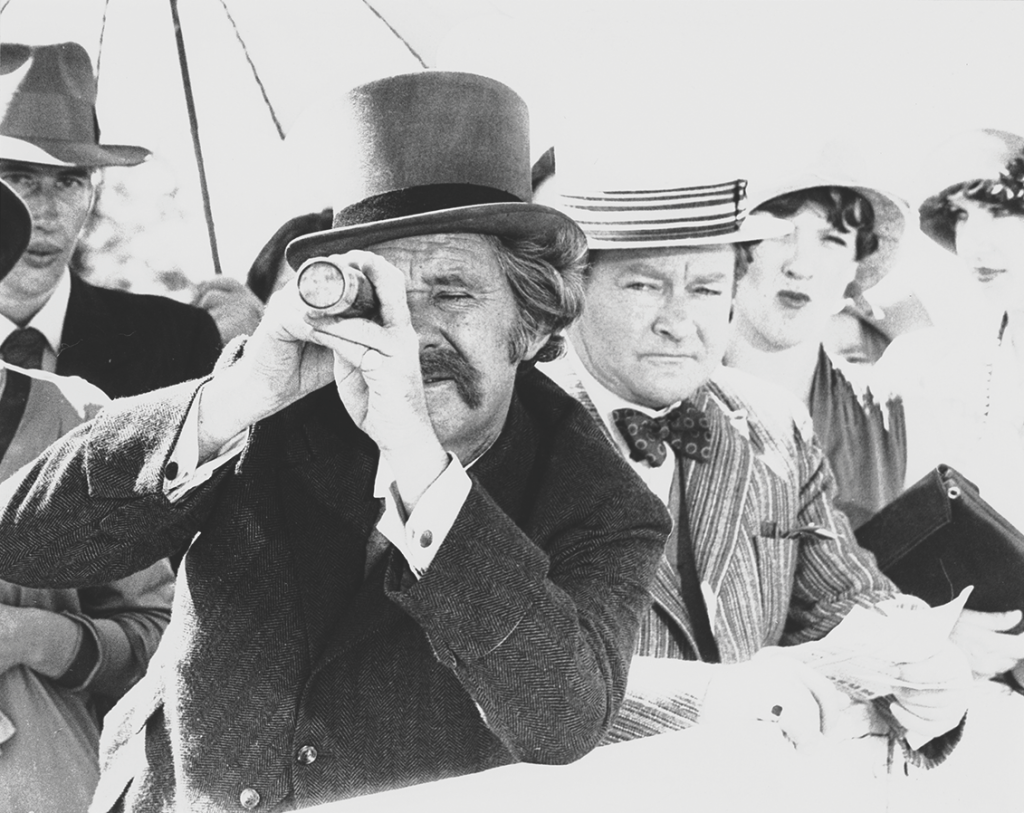
Showing film history
The Picture Show Man is very obviously the outcome of Long’s research as well as her passion and concern for Australian film history and for the longstanding difficulties encountered by those attempting to forge careers within this peripatetic industry.[25]Long went on to co-write, with her husband, Martin, The Pictures That Moved: A Picture History of the Australian Cinema, 1896–1929, Hutchinson of Australia, Melbourne, 1982. This heavily illustrated coffee-table book also includes the scripts of The Pictures That Moved and The Passionate Industry. The film is loosely based on a manuscript written by the son, Lyle Penn (‘Larry’ in Power’s film), of a travelling picture-show operator (‘Penn’s Pictures on Tour’). Penn sent his reminiscences to Long after hearing her speak on a local television show in Newcastle when promoting The Pictures That Moved in 1971.[26]The information is revealed by Long in Antony I Ginnane & Gordon Glenn, ‘The Picture Show Man: Production Report’, Cinema Papers, issue 11, January 1977, p. 244. The idea for the film took a significant amount of time to germinate, and Long faced obstacles in obtaining adequate funding to support her detailed vision for the material (which, as I’ve argued, is perhaps too pedantically focused on historical accuracy and the overall sense of temporality to provide a totally satisfying dramatic experience). The film gradually gathered momentum as funding was promised by the Australian Film Commission, the Women’s Film Fund, various private investors and the soon-to-be-formed New South Wales Film Corporation. Ultimately, it became the first feature film to receive such state-based funding from New South Wales, a financial commitment that was guaranteed by its then–newly appointed premier, Neville Wran.
Penn’s loose and episodic manuscript, which was eventually published to coincide with the release of the film in a form edited by Long’s husband, covers a significantly longer period of time, stretching from the early 1910s to the late 1930s.[27]See Lyle Penn, The Picture Show Man, ed. Martin Long, Thomas Nelson, West Melbourne, 1977. This book also includes an evocative introduction by Long. The book is a testament to the true tenacity and longevity of the travelling picture show and the role it played in disseminating, developing and transforming the practice of moviegoing in Australia and elsewhere. Penn’s book and Power’s film sit alongside an intermittent and small series of international movies that attempt to sketch this precarious but often transformative mode of film exhibition, as exemplified by such varied films as Octavio Cortázar’s short Por primera vez (1967), Farhad Mehranfar’s Paper Airplanes (1997) and Xiao Jiang’s Electric Shadows (2004).[28]For a brief discussion of this small international subgenre, see Kay Armatage, ‘Sidebar: Travelling Projectionist Films’, Film International, vol. 6, no. 4, October 2008, pp. 41–2; The Picture Show Man is granted a fairly prominent place in this brisk analysis. Although there aren’t any other Australian features that focus on this profession, there are a number of films that do depict lively screenings of Hollywood movies in makeshift or outdoor cinemas, including Stephan Elliott’s Welcome to Woop Woop (1997), which features a highly interactive screening of South Pacific (Joshua Logan, 1958); and Baz Luhrmann’s Australia (2008), in which The Wizard of Oz (Victor Fleming, 1939) provides a key point of cultural connection and reference. Many of these films dramatise and draw attention to localised responses to dominant modes of film production. For example, Víctor Erice’s extraordinary The Spirit of the Beehive (1973) demonstrates the complex impact on the children of a small village in Nationalist Spain of a travelling cinema screening of James Whale’s Frankenstein (1931). Although the implications are much less pointed, the various screenings shown in The Picture Show Man also illustrate the power and true idiosyncrasy of localised responses to an array of genres and modes of filmmaking.
The main difficulty encountered by Long in fashioning her script was how to transform these episodes and clichés into a compelling, or at least workable, narrative form that would provide adequate character development, dramatic tension and a clear claim on broader cultural and historical concerns and issues. Long was only partly successful in making this transformation to the source material, but the film does contain significant pleasures in terms of its evocative rendering of the past, its capturing of particular incidents, the expressive commitment of its often broad but colourful characterisations (particularly those portrayed by the almost always reliable Ewart and Meillon), and its clear-eyed but nostalgic portrait of a largely forgotten way of life. Power’s film survives as a remnant of a very different screen industry, one that has been transformed almost as radically in the last forty years as it was between the time of The Picture Show Man’s production and its setting in the 1920s.
Although the film features a number of scenes of audiences at the cinema, mostly within local halls rigged up for the screenings, it isn’t that interested in the mechanics of film exhibition beyond the wonder and danger of limelight, the difficulties of creating a complete entertainment package (with live performers and piano accompaniment, the latter a much-in-demand commodity), and the precariousness of hand-cranked projection. This is both a strength and underlying weakness of the film, as it misses an opportunity to provide a more layered ‘lesson’ in film history. But The Picture Show Man is more concerned with giving its audience a sense of being in a particular time and place, one in keeping with the highly situated and peculiarly heightened experiences of the rural picture-show audiences of the 1920s. Of course, this preoccupation with the ‘texture’ and peculiar temporality of the past is a key characteristic of the Australian period film of the 1970s and early 1980s. Such a focus on the sluggish passage of time of a long-past moment is equally characteristic of low-key films such as Caddie, Between Wars (Michael Thornhill, 1974), Break of Day (Ken Hannam, 1976), The Irishman (Donald Crombie, 1978), We of the Never Never (Igor Auzins, 1982), Undercover (David Stevens, 1984) and the more lyrical passages of Picnic at Hanging Rock.[29]The film also has some striking correspondences with Zinnemann’s The Sundowners. It is set in roughly the same period and in similar locations, is also concerned with the conception of ‘home’, and has a comparable feeling for the diurnal passage of time.
In most of these films, the past is presented as ‘another country’ – a connected but distanced ‘physical’ space carved from a very different temporality.[30]The US cinema of the late 1960s and 1970s was often fascinated by the period of the 1920s and 1930s, as evidenced by a range of New Hollywood films including Bonnie and Clyde (Arthur Penn, 1967), They Shoot Horses, Don’t They? (Sydney Pollack, 1969), The Sting (George Roy Hill, 1973), Chinatown (Roman Polanski, 1974), The Great Waldo Pepper (George Roy Hill, 1975) and Hard Times (Walter Hill, 1975). Although it is less compelling dramatically, The Picture Show Man does share specific qualities with a number of these movies. This particular emphasis in The Picture Show Man was met with both praise and criticism. For example, McFarlane described the film as ‘self-indulgent’,[31]McFarlane, Australian Cinema, 1970–1985, op. cit., p. 70. and elsewhere suggested that ‘The Picture Show Man’s faults are almost wholly derived from a screenplay that moves at a snail’s pace, as if pace or energy were vulgar’.[32]Brian McFarlane, ‘Horror and Suspense’, in Murray (ed.), op. cit., p. 61. In contrast, British critic Derek Malcolm argued, ‘There’s a rollicking good humour about the film that makes for a good mood. And that’s a rare enough thing in movies today to be instantly cherishable.’[33]Derek Malcolm, cited in Stratton, op. cit., p. 240. These two responses suggest the very different contexts for the film’s reception in Australia and overseas.
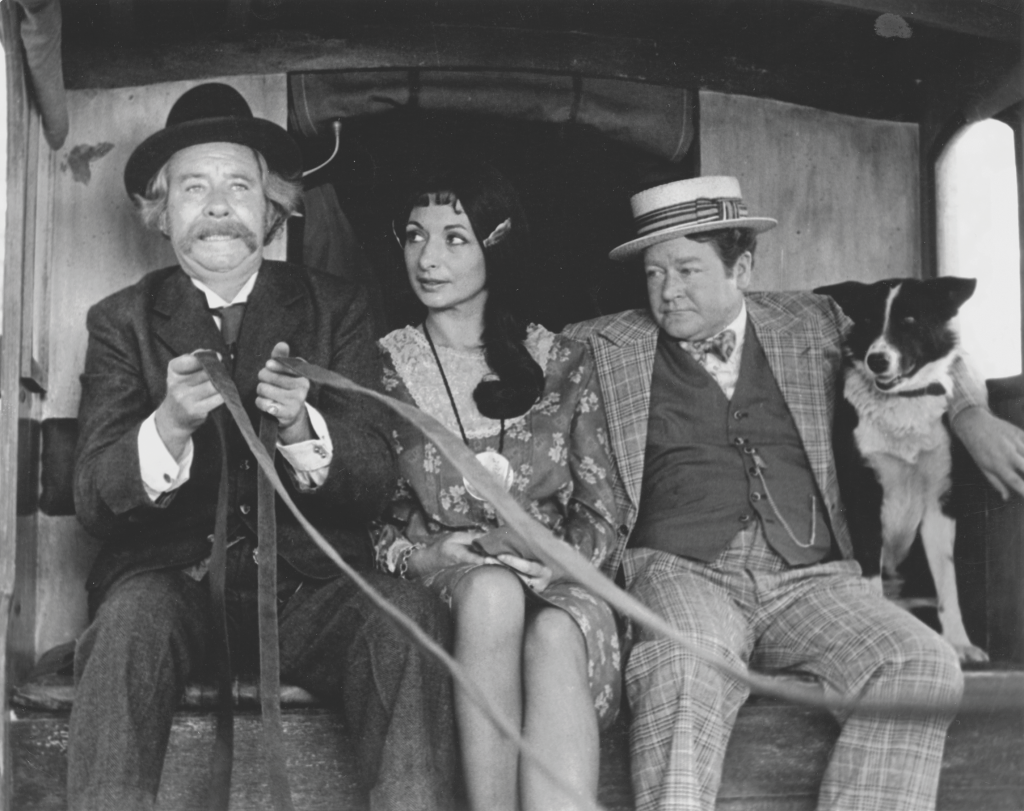
Openings and closings
The opening sequence of The Picture Show Man emphasises these different or shifting notions of time. The film commences with a long shot of a horse-drawn carriage winding its way through the New South Wales countryside. On the soundtrack – thankfully, for just about the last time – is heard the theme song meant to evoke the spirit and sound of the 1920s, but more accurately reminiscent of any number of anachronistic novelty songs of the 1970s.[34]One of the film’s major successes was its musical score. A 45 rpm single pairing the title song with the more popular ‘Tap Tap’, which is featured twice in the film, was a very minor hit on the Australian charts in the weeks after the film’s release. It reached the lower echelons of the Top 100. Immediately following the credits, the camera cuts to a closer shot of the carriage and establishes the isolation of its occupants within a damp, overcast and unpopulated rural environment. Revealingly, Pym, Freddie and piano player Lou (Garry McDonald[35]The casting of McDonald provides yet another instance of how the film was designed to appeal to a broad but segmented audience who might recognise its varied performers from a range of other contexts. McDonald had become a very well known, even iconic, figure on Australian television through his celebrated appearances as Norman Gunston on the ABC in 1975 and 1976. In the latter year, Gunston became the only fictional character ever to have won the Gold Logie for Most Popular Personality on Australian Television.) become immediately and literally bogged down, their old-fashioned mode of transport waylaid by the mud cloying around the wheels of their carriage. From this moment onwards, we are attuned to the struggle of these characters who continue to practise their old-fashioned way of life in the increasingly modernised world that surrounds them.
In The Picture Show Man, the cinema appears less as a force of modernity than a continuation of nineteenth-century forms of mixed-mode entertainment. This is particularly true of the cinematic experience nostalgically favoured by Power’s film: the ‘out-of-time-ness’ of its central characters and their pursuits are immediately reinforced by the appearance of a rival, the American picture-show operator Palmer. The latter moves much more freely and quickly through the landscape, is plainly peddling a more up-to-date product – indicated, for instance, by the flashier and more polished advertising that adorns his carriage – and immediately steals the disgruntled Lou from Pym’s show. Even though he pre-figures the inevitable success and dominance of American interests in the Australian film industry, Palmer’s connection to place is much less grounded and fixed than that of Pym and his gang.
This was also true of the actors themselves. Both Meillon and Ewart were celebrated local performers who had failed to make significant inroads into international production, while Taylor moved very quickly into large-scale overseas filmmaking after roles in King of the Coral Sea (Lee Robinson) and Long John Silver (Byron Haskin; a US film shot in Australia) in 1954. He quickly became a major international star, appearing in films like Giant (George Stevens, 1956), The Time Machine (George Pal, 1960), The Birds (Alfred Hitchcock, 1963) and the execrable Hotel (Richard Quine, 1967). But Taylor’s Palmer in The Picture Show Man is also an opportunistic fly-by-nighter. At the conclusion of the film, when his new motorised transport and sound equipment are submerged in the local lake, Palmer is all too quick to sell off his interests to his rivals and look towards new opportunities. Meanwhile, Pym provides a model for all those local filmmakers, exhibitors and distributors who eked out a living and were in it for the long haul.
As McFarlane has argued, The Picture Show Man sits alongside an array of other period films of its era that view progress ‘warily’ and demonstrate ‘an Australian resistance to change and a suspicion of American brashness and high-pressure business methods’.[36]McFarlane, Australian Cinema, 1970–1985, op. cit., p. 177. As Susan Dermody and Elizabeth Jacka also claim, these films often have a ‘literary feeling’ that is ‘timeless’, and which ‘seems to inhere in their gently descriptive and evocative creation of period, and even more plainly in their character- rather than action-based narratives’.[37]Susan Dermody & Elizabeth Jacka, Anatomy of a National Cinema, The Screening of Australia, vol. 2, Currency Press, Sydney, 1988, p. 32. In the final moments of The Picture Show Man, Pym and Freddie return to their past triumphs – another, perhaps final performance of ‘Tap Tap’ – when the sound-on-disc technology they have purchased inevitably breaks down and the audience asks for a song instead. This scene invokes the senses of both community and failure that underlie the film. The moment when the movie being screened goes out of sync and the audience becomes restless is reminiscent of familiar situations from other movies about the transition to sound, like Singin’ in the Rain (Stanley Donen & Gene Kelly, 1952).
But The Picture Show Man deploys an extravagant sleight of hand to manage this conceit and emphasise its affection for simpler or superseded modes of entertainment. The film being screened is actually Clarence G Badger’s 1936 Australian potboiler, Rangle River, and its anachronistic appearance here, straight after a scene that shows a poster promoting The Jazz Singer (Alan Crosland, 1927) pasted to the trunk of a tree, reveals a surprising and uncharacteristic lack of care in terms of historical veracity. But the tin-eared primitiveness of Rangle River also suggests what was lost with the coming of sound and the failure of many Australian films of the 1930s to come to terms with technological and aesthetic change. The irony of this choice is further revealed when one looks more closely at Rangle River’s production history. Badger was a superannuated American director nearing the end of his career, while star Victor Jory was a North American actor with a career in Hollywood on either side of this production. The film itself was an Australian western based on a story by Zane Grey (though the script was written by Charles and Elsa Chauvel). In these final moments, The Picture Show Man reinforces and stages the complex interplay that exists between Australian and international cinema. In the process, it emerges as an emblematic film of the 1970s revival, one that promotes cultural nationalism yet looks towards overseas models and markets as key inspirations.
This article has been refereed.
Select bibliography
William K Everson, ‘The Picture Show Man’, Films in Review, vol. 28, no. 9, November 1977, pp. 565–6.
Basil Gilbert, ‘The Picture Show Man’, Cinema Papers, issue 13, July 1977, pp. 79–80.
Antony I Ginnane & Gordon Glenn, ‘The Picture Show Man:
Production Report’, Cinema Papers, issue 11, January 1977, pp. 243–49, 251.
Gordon Glenn & Scott Murray, ‘John Power’, Cinema Papers, issue 13, July 1977, pp. 22–5, 91.
Lyle Penn, The Picture Show Man, ed. Martin Long, Thomas Nelson, West Melbourne, 1977.
Andrew Pike & Ross Cooper, Australian Film, 1900–1977, rev. edn, Oxford University Press, Melbourne, 1998 [1980], pp. 312–3.
Harry Robinson, ‘Long Day’s Journey into Success’, The Bulletin, 17 January 1978, pp. 48–9.
David Stratton, The Last New Wave: The Australian Film Revival, Angus & Robertson, Sydney, 1980, pp. 236–40.
Stephen Vagg, Rod Taylor: An Aussie in Hollywood, BearManor Media, Duncan, OK, 2010, pp. 191–8.
David White, ‘The Film Makers’, Men’s Vogue, March–April 1977, pp. 22–5.
MAIN CAST
‘Pop’ Pym John Meillon Palmer Rod Taylor Freddie John Ewart Larry Harold Hopkins Fitzwilliam Patrick Cargill Madame Cavalli Jelena Žigon Lucy Sally Conabere Lou Garry McDonald Miss Lockhart Judy Morris Mrs Duncan Jeanie Drynan Policeman Tony Barry Major Lockhart Don Crosby
PRINCIPAL CREDITS
Year of Release 1977 Length 98 minutes Director John Power Screenplay Joan Long, based on the book by Lyle Penn Production Company Limelight Productions Producer Joan Long Production Manager Sue Milliken Cinematography Geoff Burton Editor Nicholas Beauman Art Direction David Copping Costume Design Judith Dorsman Music Peter Best
Endnotes
| 1 | See, for example, Susie Eisenhuth, ‘Reunion of the Three Wild Men’, Australian Women’s Weekly, 17 November 1976; Andy Fowler, ‘Superstar Rod Teams Up with His Old Mate John’, The Daily Mirror, 8 September 1976; and Don Groves, ‘The Many Faces of Rough Diamond Rod’, TV Times, 18 December 1976. |
|---|---|
| 2 | David Stratton, The Last New Wave: The Australian Film Revival, Angus & Robertson, Sydney, 1980, p. 238. |
| 3 | Most of Power’s subsequent work was in TV and included episodes of series such as The Dismissal, Return to Eden and The Dirtwater Dynasty, as well as a number of TV movies. His only subsequent theatrical feature, Father (1990), is a powerful account of the traumatic legacy of Nazi war crimes, starring Max von Sydow. |
| 4 | Joan Long, ‘Suffering in Silence’, Nation Review, 23 June 1977. |
| 5 | See Stratton, op. cit., p. 238. |
| 6 | Meillon appeared in a number of often eye-catching smaller roles in Australian, British and US productions from the late 1950s onwards. These included significant films such as On the Beach (Stanley Kramer, 1959), The Sundowners (Fred Zinnemann, 1960), Billy Budd (Peter Ustinov, 1962), They’re a Weird Mob (Michael Powell, 1966), Walkabout (Nicolas Roeg, 1971) and Wake in Fright (Ted Kotcheff, 1971). He was also widely known to Australian audiences for his leading role in the TV comedy series My Name’s McGooley, What’s Yours?. British director Powell was particularly complimentary about Meillon’s talents, claiming he ‘was a genius, but far out’; see Michael Powell, Million-dollar Movie, Mandarin, London, 1993, p. 476. |
| 7 | See, for example, the comments by Tim Burstall – later refuted by Long – in ‘Not a Disaster’, The Bulletin, 8 October 1977. |
| 8 | For an overview of this response, see Andrew Pike & Ross Cooper, Australian Film, 1900–1977, rev. edn, Oxford University Press, Melbourne, 1998 [1980], p. 312. |
| 9 | Basil Gilbert, ‘The Picture Show Man’, Cinema Papers, issue 13, July 1977, pp. 80, 79. More troublingly, Gilbert opens his review with some outwardly and bizarrely misogynistic claims about the possible reasons underlining the film’s failure: ‘If there is any truth in the assertion that male writers cannot do justice to the female psyche in their novels and plays, and women writers castrate their literary creations, then this may account for the success of Joan Long’s production of Caddie and the relative failure of her recent The Picture Show Man’ (p. 79). The less said about the arguments and assumptions contained in this part of Gilbert’s review, the better. |
| 10 | Sandra Hall, ‘A Folksy Experiment That Misses’, The Bulletin, 14 May 1977, p. 63. |
| 11 | Stephen Vagg, Rod Taylor: An Aussie in Hollywood, BearManor Media, Duncan, OK, 2010, p. 195. The first international review of the film in Variety was generally much more positive in its tone and evaluation, praising the movie for its ‘old-fashioned endearing quality’; see Mike Harris (Miha), ‘The Picture Show Man’, Variety, 13 April 1977. |
| 12 | William K Everson, ‘The Picture Show Man’, Films in Review, vol. 28, no. 9, November 1977, p. 565. The film received significant exposure at the Telluride Film Festival in September 1977. |
| 13 | See Janet Maslin, ‘Screen: Thalia Rescues Picture Show Man’, The New York Times, 26 December 1980; John Pym, ‘The Picture Show Man’, Monthly Film Bulletin, vol. 49, no. 576, January 1982, p. 110; and Michael Hohensee, ‘Picture Show Man for BBC’, TV Times, 7 January 1979. |
| 14 | See Peter Wilson, ‘Picture Show Man Heads for the U.S.’, The Sun, 4 January 1978. Although Taylor was seen as an important addition to the cast and a fillip to the film’s international box-office prospects, his stardom was well and truly waning by the time of its production and release. |
| 15 | See the short interview with Taylor, ‘Return to Oz’, included as an extra on Umbrella Entertainment’s 2005 DVD release of the film. |
| 16 | In this regard, The Picture Show Man remains a somewhat-marginal choice on the list of fifty colour films designated for restoration under the Kodak/Atlab banner. Decisive factors in its inclusion were undoubtedly its subject matter along with the important contributions of its historically significant cast and crew. |
| 17 | Tom O’Regan, Australian National Cinema, Routledge, London & New York, 1996. In fact, O’Regan doesn’t mention the film at all. |
| 18 | Jonathan Rayner, Contemporary Australian Cinema: An Introduction, Manchester University Press, Manchester & New York, 2000. |
| 19 | See Graeme Turner, ‘Art Directing History: The Period Film’, in Albert Moran & Tom O’Regan (eds), The Australian Screen, Penguin Books, Melbourne, 1989, pp. 99–117; Geoff Mayer, ‘Comedy’, in Scott Murray (ed.), The New Australian Cinema, Thomas Nelson, West Melbourne, 1980, pp. 45–60; Neil Rattigan, Images of Australia: 100 Films of the New Australian Cinema, Southern Methodist University Press, Dallas, 1991; and Brian McFarlane, Australian Cinema, 1970–1985, Secker & Warburg, London, 1987. |
| 20 | This mythic, almost heroic approach to the struggle of the individual within the parched terrain of Australian cinema is characteristic of a range of books and documentaries including Stratton’s The Last New Wave and the TV documentary series The Celluloid Heroes, commissioned to celebrate the first 100 years of cinema in Australia. |
| 21 | Other feature films of this era produced by women include The Removalists (Tom Jeffrey, 1975), produced by Margaret Fink; and Break of Day (Ken Hannam, 1976) and Summerfield (Hannam, 1977), both produced by Patricia Lovell. Lovell also acted as executive producer on Picnic at Hanging Rock. During this period, several other women who went on to produce significant Australian films such as Jane Scott filled the role of associate producer on specific features. |
| 22 | See, for example, Long’s ‘Historical Survey of Women in Australian Filmmaking Production’: Part 1, Cinema Papers, issue 9, June–July 1976, pp. 34–8, 89; and Part 2, Cinema Papers, issue 10, September– October 1976, pp. 138–41, 180. Long’s talk at the launch of the Women’s Film Fund Catalogue also provides an illuminating account of her tenacious career and the broader context of women’s participation in the film industry; see ‘Caddie Goes to Silver City’, Filmnews, vol. 15, no. 2, March 1985, pp. 1, 10. |
| 23 | A subsequent feature produced by Long, Sophia Turkiewicz’s Silver City (1984), deals with the cultural memory of postwar migration through its focus on the Polish immigrant experience in Australia in the 1950s. Aside from her final film as producer, Emerald City (Michael Jenkins, 1988), all of the features Long worked on can be regarded as ‘memory’ works. The exception, Emerald City, is based on a play by David Williamson and provides a contemporary satire of the publishing and film industries as well as the brash commercialism of Sydney. |
| 24 | The CFU changed its name to ‘Film Australia’ in 1973, the year of The Passionate Industry’s release. It initially operated under the moniker of the Australian National Film Board until 1956, and became subsumed into the operations of Screen Australia in 2008. The Film Australia / CFU archive was transferred to the National Film and Sound Archive in 2011. |
| 25 | Long went on to co-write, with her husband, Martin, The Pictures That Moved: A Picture History of the Australian Cinema, 1896–1929, Hutchinson of Australia, Melbourne, 1982. This heavily illustrated coffee-table book also includes the scripts of The Pictures That Moved and The Passionate Industry. |
| 26 | The information is revealed by Long in Antony I Ginnane & Gordon Glenn, ‘The Picture Show Man: Production Report’, Cinema Papers, issue 11, January 1977, p. 244. |
| 27 | See Lyle Penn, The Picture Show Man, ed. Martin Long, Thomas Nelson, West Melbourne, 1977. This book also includes an evocative introduction by Long. |
| 28 | For a brief discussion of this small international subgenre, see Kay Armatage, ‘Sidebar: Travelling Projectionist Films’, Film International, vol. 6, no. 4, October 2008, pp. 41–2; The Picture Show Man is granted a fairly prominent place in this brisk analysis. Although there aren’t any other Australian features that focus on this profession, there are a number of films that do depict lively screenings of Hollywood movies in makeshift or outdoor cinemas, including Stephan Elliott’s Welcome to Woop Woop (1997), which features a highly interactive screening of South Pacific (Joshua Logan, 1958); and Baz Luhrmann’s Australia (2008), in which The Wizard of Oz (Victor Fleming, 1939) provides a key point of cultural connection and reference. |
| 29 | The film also has some striking correspondences with Zinnemann’s The Sundowners. It is set in roughly the same period and in similar locations, is also concerned with the conception of ‘home’, and has a comparable feeling for the diurnal passage of time. |
| 30 | The US cinema of the late 1960s and 1970s was often fascinated by the period of the 1920s and 1930s, as evidenced by a range of New Hollywood films including Bonnie and Clyde (Arthur Penn, 1967), They Shoot Horses, Don’t They? (Sydney Pollack, 1969), The Sting (George Roy Hill, 1973), Chinatown (Roman Polanski, 1974), The Great Waldo Pepper (George Roy Hill, 1975) and Hard Times (Walter Hill, 1975). Although it is less compelling dramatically, The Picture Show Man does share specific qualities with a number of these movies. |
| 31 | McFarlane, Australian Cinema, 1970–1985, op. cit., p. 70. |
| 32 | Brian McFarlane, ‘Horror and Suspense’, in Murray (ed.), op. cit., p. 61. |
| 33 | Derek Malcolm, cited in Stratton, op. cit., p. 240. |
| 34 | One of the film’s major successes was its musical score. A 45 rpm single pairing the title song with the more popular ‘Tap Tap’, which is featured twice in the film, was a very minor hit on the Australian charts in the weeks after the film’s release. It reached the lower echelons of the Top 100. |
| 35 | The casting of McDonald provides yet another instance of how the film was designed to appeal to a broad but segmented audience who might recognise its varied performers from a range of other contexts. McDonald had become a very well known, even iconic, figure on Australian television through his celebrated appearances as Norman Gunston on the ABC in 1975 and 1976. In the latter year, Gunston became the only fictional character ever to have won the Gold Logie for Most Popular Personality on Australian Television. |
| 36 | McFarlane, Australian Cinema, 1970–1985, op. cit., p. 177. |
| 37 | Susan Dermody & Elizabeth Jacka, Anatomy of a National Cinema, The Screening of Australia, vol. 2, Currency Press, Sydney, 1988, p. 32. |
